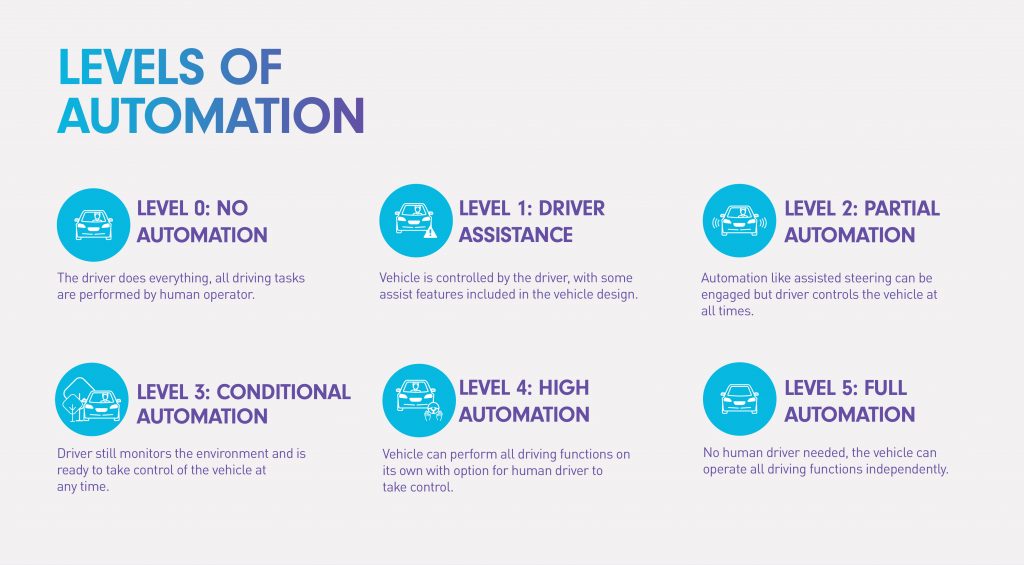Data storage helps the automotive industry take the next step forward
Car manufactures are building smarter technologies into autonomous vehicles (AVs) that could change transportation. When AVs are further integrated into society, they have the potential to revolutionize how people move through their daily life and could even influence how cities are designed. The road to get there is long but innovations in data storage can help navigate the journey.
Choose the Right Storage Device
The first step in automotive design is understanding AV data needs. It’s important to discern how the internal NAND storage, controller chip, and firmware all work together to help the data communicate with the rest of the vehicle system.
When asked how data storage impacts automotive design, Western Digital Global Automotive Segment Marketing Director, Russell Ruben, credits it to enhanced levels of vehicle autonomy.
“Storage demand has really taken off. It’s changed significantly with an increase in vehicle applications and connectivity,” Ruben said.
Ruben has worked in the automotive storage sector for almost a decade, and he believes embedded NAND offers high-quality solutions and robust reliability for car manufacturers.
As vehicle systems are being designed, it’s critical to calculate the data workload accurately. The endurance of the storage device depends on the amount of data written, and can vary based on the capacity of storage. Every device has a limit, so it’s important to determine the data write requirements based on real system workloads.
The write amplification factor (WAF) is also part of the system workload. Because the amount of data written to the NAND storage helps determine the endurance and wear level over time, understanding the WAF is important to optimize drive performance. According to Ruben, for most car makers a typical WAF range is 1.0-2.5, meaning that data workloads are best handled when automotive grade-NAND is integrated from the beginning of the vehicle design process.
Do More with Data
AVs are essentially supercomputers on wheels. With a range of built-in sensors, cameras, and internal networks, they can seamlessly detect everything that’s happening. They’re able to see more of what’s on the road — from other cars, cyclists, pedestrians, and street signs.
Smarter vehicles have a stronger sense of their surroundings than most human drivers.
And AVs use more data too.
Ruben recently gave a talk at Automotive World, a leading provider of auto industry research and events, explaining just how much data AVs use and how that compares to data leveraged by the average internet user.
“In 2020, the average autonomous car processed 4,000 gigabytes of data per day, while the average internet user processed 1.5 gigabytes,” he said.
One autonomous vehicle is equivalent to almost 2,700 average internet users.
As AVs continue to be upgraded with more advanced cameras and sensors, they will have smarter functions and technology that generate even more data.
New sets of smart features can help drivers stay steady on the road. With reliable storage devices, aspects like lane departure detection, rearview video, and object avoidance can be enabled. Additionally, over-the-air (OTA) software updates from manufacturers can be pushed to add new features and improvements.
Some cars even have the ability to self-park and can be fully automated to drive independently. But the auto world still has some distance to travel before self-driving vehicles are regularly seen on the street.
Level Up the Lane
The National Highway Traffic Safety Administration (NHTSA) published a level system — Level 1 (no automation) to Level 5 (full automation) — to explain where the industry is now, and its impact going forward.
Most AVs on the road today are Level 2 — partial automation or below. And as higher levels integrate into society, the potential economic benefit is strong.

For many people, employment or independent living relies on the ability to drive. Automated vehicles could help more individuals get to work and create new job opportunities for approximately 2 million people with disabilities.
When automotive data technology evolves, the impact goes beyond just cars. Soon, roads and cities could start to see significant shifts in parking, road construction, and mass transit.
Scale the City
As AVs continue to roll out with more digital storage on-board, reaching Level 3 autonomy and beyond could help reduce traffic and road congestion. This can have a significant effect on road development and how city layouts are planned.
In the future, driverless cars could drop off passengers and then move along. So real estate that was once occupied by parking lots and massive garages can be replaced with more human-focused needs like housing, public parks, or shopping centers.
Russell Ruben postulates there might even be a day when people don’t want to own a car. “…Instead they could subscribe to a shared driving service, similar to streaming for music or movies.”
And with more efficient AVs on the street, cars could travel closer together, giving cyclists and pedestrians more space.
Look Down the Road
This is still the beginning of the autonomous vehicle revolution. With the right NAND storage, vehicle data workloads can stay balanced, radically enhancing how people travel and experience life. It will take time, but with any big shift forward, comes the potential to change everything for the better.
